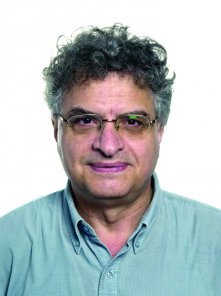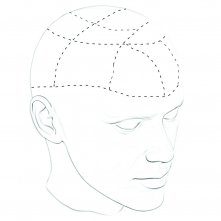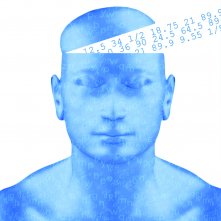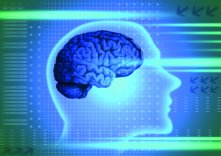The American Committee for the Weizmann Institute of Science (ACWIS) and New York University (NYU) recently held a Day of Science on the topic of “Unveiling the Secrets of the Brain: Collaborations in Neuroscience.”
While the topic of neuroscience could be perceived as daunting, the half-day seminar, which featured four prominent scientists, attracted about 150 people to the Helen & Martin Kimmel Center for University Life at NYU. This large turnout is perhaps because, as Prof. Ilan Chet, President of the Weizmann Institute of Science (WIS), Israel, indicated in his welcoming remarks, brain research is one of the areas of science that attracts the most interest from the public. We all want to know who we are, and what makes us “us,” both as a species and as individuals.
Prof. Yadin Dudai, head of the Weizmann Institute’s Department of Neurobiology, performs globally recognized neuroscience work, particularly with respect to the processes and mechanisms of learning and memory. In his presentation entitled “The Hidden Life of Memories,” Prof. Dudai led the audience through the lifespan of a memory, or, as he prefers to call it, “the biography of an item in our memory.”

When we encounter a stimulus (such as observing a face or a building), it takes about a fraction of a second to register that stimulus. If you record that information for slightly longer — two or three seconds — it becomes short-term memory, which lasts for a few minutes.
Next is the vital stage called “consolidation.” This is the phase in which short-term memory becomes stabilized as long-term memory. This can take from a few minutes to a few weeks, and involves interaction between the cortex and the hippocampus brain regions. If something goes wrong in this interaction, the memory remains short-term.
Once a memory is long-term and stable, how do we actually “remember”? Typically it is through exposure to a stimulus (for example, smelling and tasting hot chocolate), which then triggers “associative recall” so that the stimulus calls up an existing long-term memory (ice-skating with your sister and drinking hot chocolate to get warm).
Each item in our memory has a distinct biography, including properties such as content and age (how old the memory is). But no matter what the memory is about, the lifespan of a memory can be described in terms of phases. These phases are crucial, as Prof. Dudai’s research shows that at these points we may be able to modify or erase a long-term memory.
First, the memory must be called up. When a long-term memory is retrieved, it shifts from the inactive, stable state to the active, unstable state (in other words, it is again short-term), after which the memory may then be reconsolidated. This has clinical promise for persons who live with harmful memories. Interference with damaging, long-term memories may be performed in a number of ways, including electroconvulsive therapy or medicines. This research could help people who suffer from severe, debilitating problems of memory, such as post-traumatic stress disorder (PTSD).

In this work on amelioration of traumatic memories, Prof. Dudai is collaborating with NYU’s Prof. Joseph LeDoux, who is a University Professor, the Henry and Lucy Moses Professor of Science, and a member of the Center for Neural Science and the Department of Psychology.
Prof. LeDoux, whose lecture was entitled “The Emotional Brain: Friend and Foe,” focuses on a topic long ignored by neuroscientists: emotion. By studying emotion and memory, Prof. LeDoux has learned that when we retrieve memories, we call up the last, most recent version of the memory; this is new and evolving research, as it was previously generally accepted that the original memory was the first to be retrieved. This research has implications for issues such as the reliability of eyewitness testimony and other situations where accurate memory is critical.
Another aspect of his research is the many effects of fear on the emotional brain and the problems (such as anxiety, depression, panic, obsessive-compulsive disorder, and other syndromes, such as PTSD) that may result.
Intangibles such as emotions have long been considered unmeasurable; however, thanks to new techniques in human brain imaging, these can now be studied empirically. The WIS/NYU collaboration involves core research in brain imaging and is providing extraordinary results, as David Heeger, Professor of Psychology and Neural Science at NYU, discussed in his presentation “Brain Imaging: A New Window into the Human Mind.”
Brain imaging by functional magnetic resonance imaging (fMRI) is similar to the MRIs performed for routine medical examinations. The difference between an fMRI and a standard MRI is that the fMRI has the ability to observe both the structures of the brain and also which structures participate in specific functions; for example, the part of the brain that responds to a given type of stimulation, whether it is physical, verbal, visual, or memory-related.
However, multiple parts of the visual cortex respond to optic stimulation. There are two locations in the brain that process motion, but they do it in different ways, enabling the brain to make inferences about motion and space.
Dr. Heeger stated that when the back of the brain — the visual cortex — is viewed via fMRI during a visual experience, the image shows a sweeping change across the cortex, proving that there is an actual physical change in the brain as a result of perception.
Such physical change as a result of perception is clearly demonstrated by the work of Prof. Rafael Malach and his group at the Weizmann Institute’s Neurobiology Department, whose research using “natural” brain conditions has drawn worldwide attention. His presentation, “Watching Brains Watching Movies: Studying the Human Brain under Free, Natural Conditions,” drew a great deal of interest from the audience, who were encouraged to challenge their own powers of perception.
Scientists, says Prof. Malach, are tempted to treat human psychology and the human mind as an engineering problem, because it is “very convenient” to believe that you have total control over the research and examine the brain as discrete parts.

His intuition, however, is that while this is indeed a powerful approach, it cannot provide the full picture since our minds work in creative, original, spontaneous ways that cannot always be considered in machinelike terms.
His solution? To study the brain under more naturalistic conditions. Prof. Malach thought films would be a good way to simulate natural vision: movies are streaming, are multidimensional, contain auditory stimulation, have emotional aspects, and are much more like our natural vision than the traditional stimulus/response studies.
Together with the Weizmann Institute’s Dr. Uri Hasson, who is now at NYU, and other students in his group, they performed an experiment that was both scientific and fun — they showed people 30 minutes of the classic Western, “The Good, The Bad and the Ugly.” All the subjects had to do was lie in an fMRI machine and enjoy the movie while Prof. Malach and his team performed scans to see what happens when the brain is engaged and taking in many stimuli.
The researchers were surprised by the results, which showed that people’s visual systems are remarkably similar when receiving the same sensory stimuli. In fact, the readouts from each of the participants were so alike that by observing a map of brain activity of one individual watching the movie, it is possible to tell, with a great degree of confidence, what all the other brains will do when watching the same movie. This phenomenon, called “intersubject synchronization,” extends across a variety of factors, including gender lines.
While our experience of a movie is of a continuous stream, fMRI shows that the activity in our brain is actually more like an orchestra — different areas rise and fall in response to cues, and each area is responding to a different scene or aspect of the movie.
These free-viewing studies also have great potential for use as diagnostic tools to find brain abnormalities. For example, could movies diagnose or reveal what goes on in the autistic brain? Again, Prof. Malach showed intriguing preliminary results from a study in collaboration with Uri Hasson and Prof. Marlene Behrmann. The brains of autistic persons showed a drastic reduction in the “synchronization” effect of the movies.
However, the autistic brain was not quiet and inexpressive — rather, it appeared to be engaged in spontaneous action, which the fMRI displayed in washes of color representing vast waves of activity. The mystery is that this change was generated from inside the autistic brain, not from outside stimulation such as the movie.
It is not yet understood why this happens, but Prof. Malach’s further studies could shed light on this effect. Very little of this activity is seen in the “normal” brain. Such research is a promising tool with great potential to reveal brain deficits in people not only with autism, but with conditions such as retardation and dyslexia.

The WIS/NYU partnership is taking this and other research even further, into issues of time, narrative, consciousness, and diagnostic tools. This exploration of the inner workings of the brain will enable us to not only understand the basic ways in which our minds work, but will bring us closer to alleviating the suffering caused when something goes wrong, resulting in disorders such as Alzheimer’s disease, autism, and schizophrenia. New knowledge can lead to new therapies. The scientists allied in the WIS/NYU collaboration in neuroscience are truly using science for the benefit of humanity.
Prof. Yadin Dudai's research is supported by the Norman and Helen Asher Center for Brain Imaging; the Nella and Leon Benoziyo Center for Neurosciences; the Carl and Micaela Einhorn-Dominic Brain Research Institute; the Murray H. & Meyer Grodetsky Center for Research of Higher Brain Functions; the Sylvia and Martin Snow Charitable Foundation; Mr. and Mrs. Irwin Green, Boca Raton, FL; and Dr. Miriam Netzer, Forest Hills, NY. Prof. Dudai is the incumbent of the Sara and Michael Sela Professorial Chair of Neurobiology.Prof. Rafael Malach's research is supported by the Nella and Leon Benoziyo Center for Neurosciences; the Clore Center for Biological Physics; the Carl and Micaela Einhorn-Dominic Brain Research Institute; the Murray H. & Meyer Grodetsky Center for Research of Higher Brain Functions; the A.M.N. Fund for the Promotion of Science, Culture and Arts in Israel; the Edith C. Blum Foundation; and Mr. and Mrs. Irwin Green, Boca Raton, FL. Prof. Malach is the incumbent of the Barbara and Morris Levinson Professorial Chair in Brain Research.
The Weizmann Institute of Science in Rehovot, Israel, is one of the world's foremost centers of scientific research and graduate study. The American Committee for the Weizmann Institute of Science is a community of dedicated people who share a common vision in support of the Institute. The generous assistance the Weizmann Institute receives from individuals, foundations, and corporations is vital for its future. Committee members show their devotion to the advancement of the Institute's goals by becoming partners in the search for answers to the most difficult challenges facing humanity.
